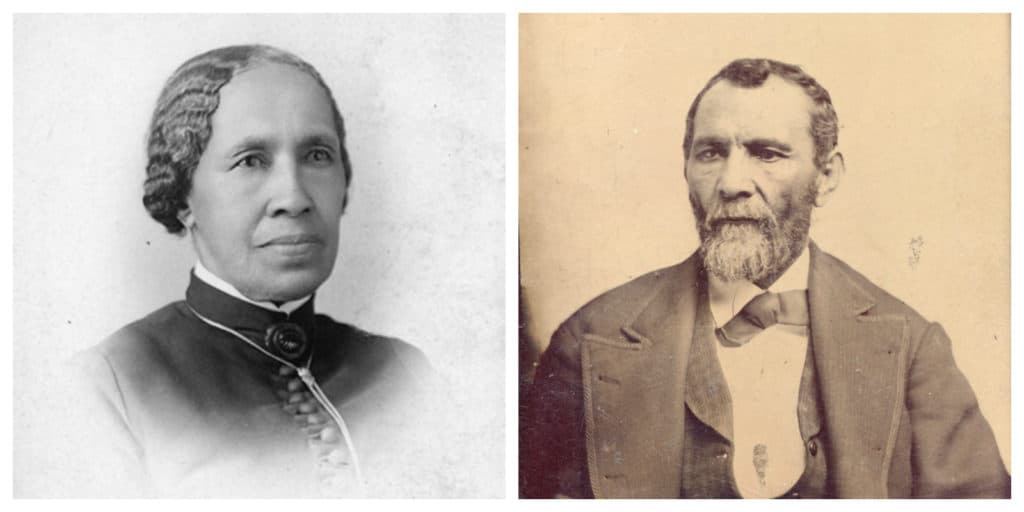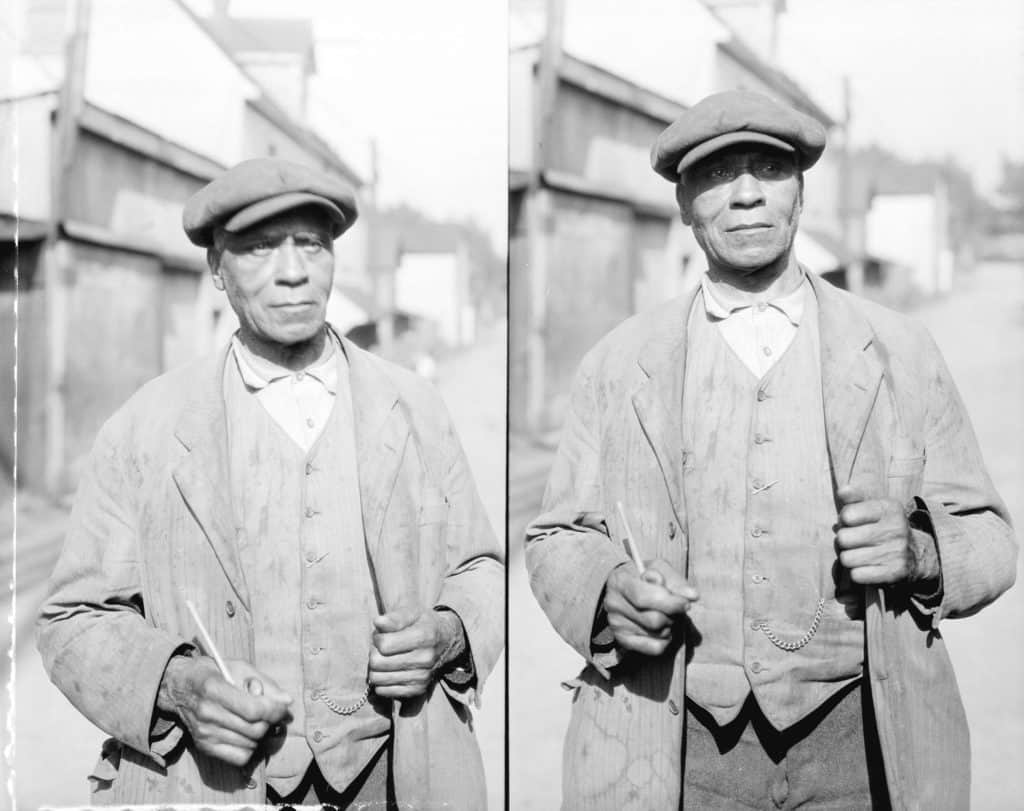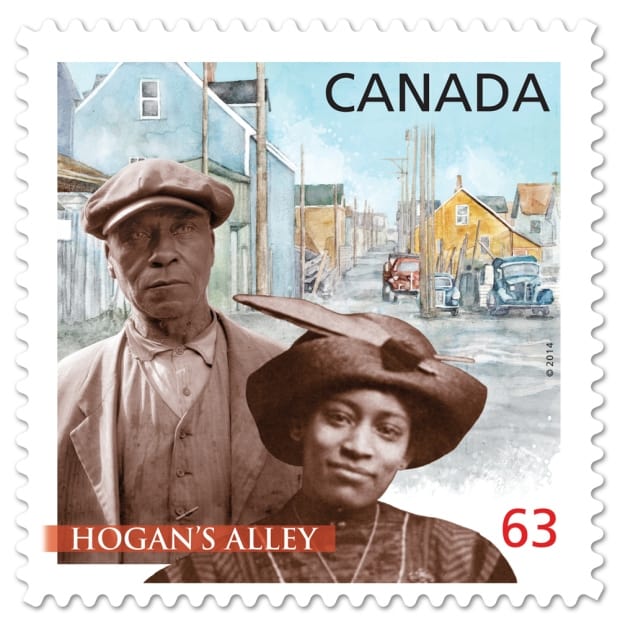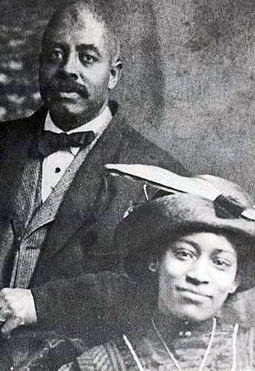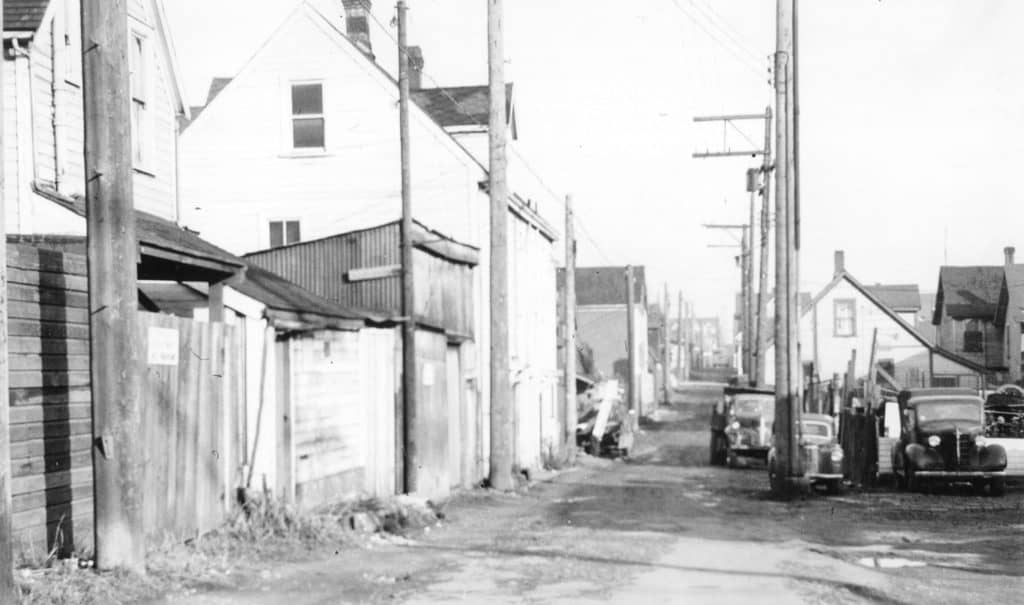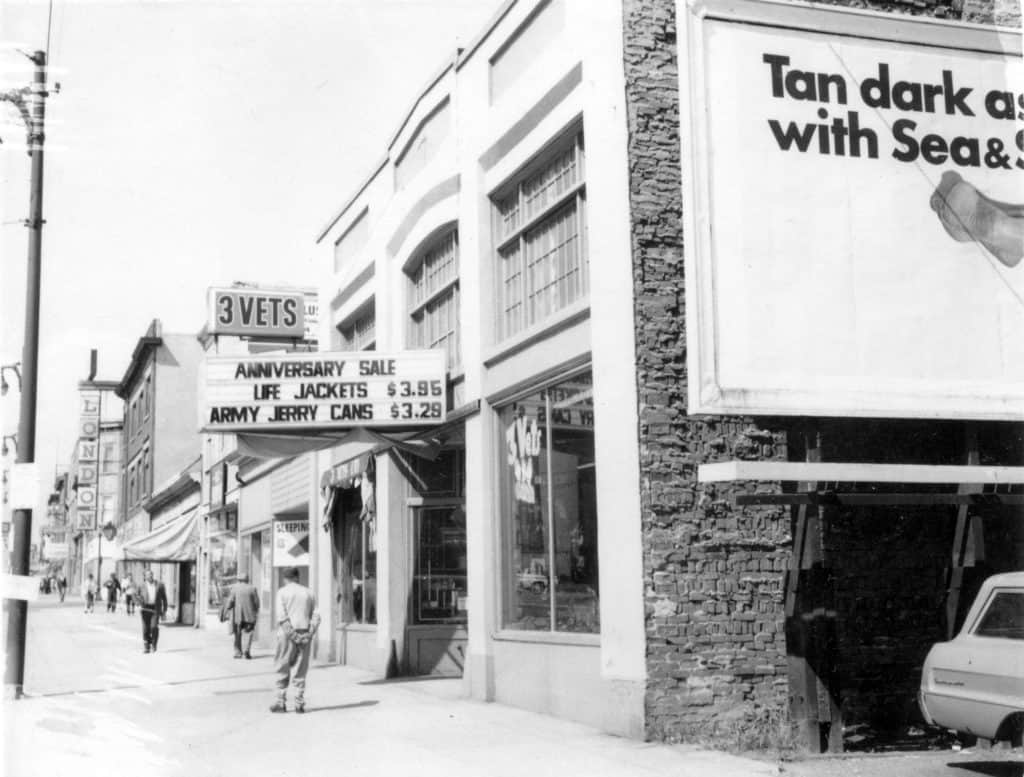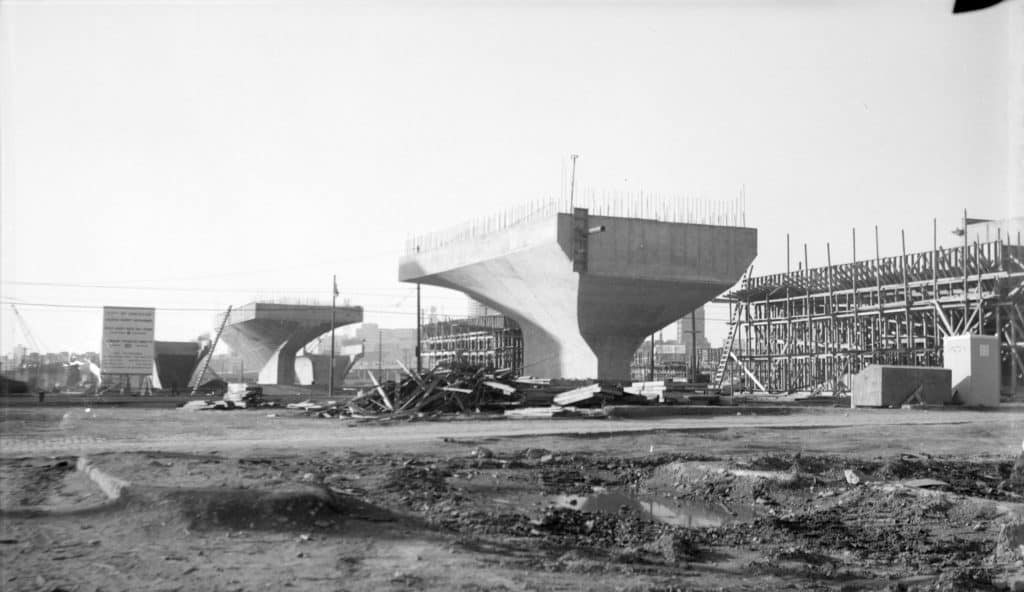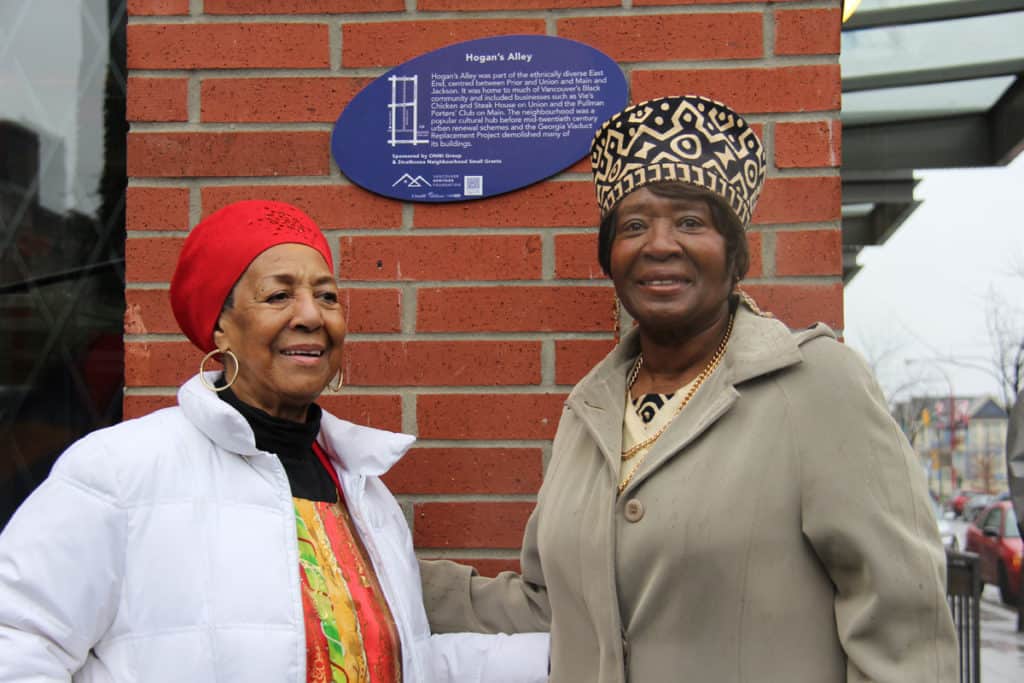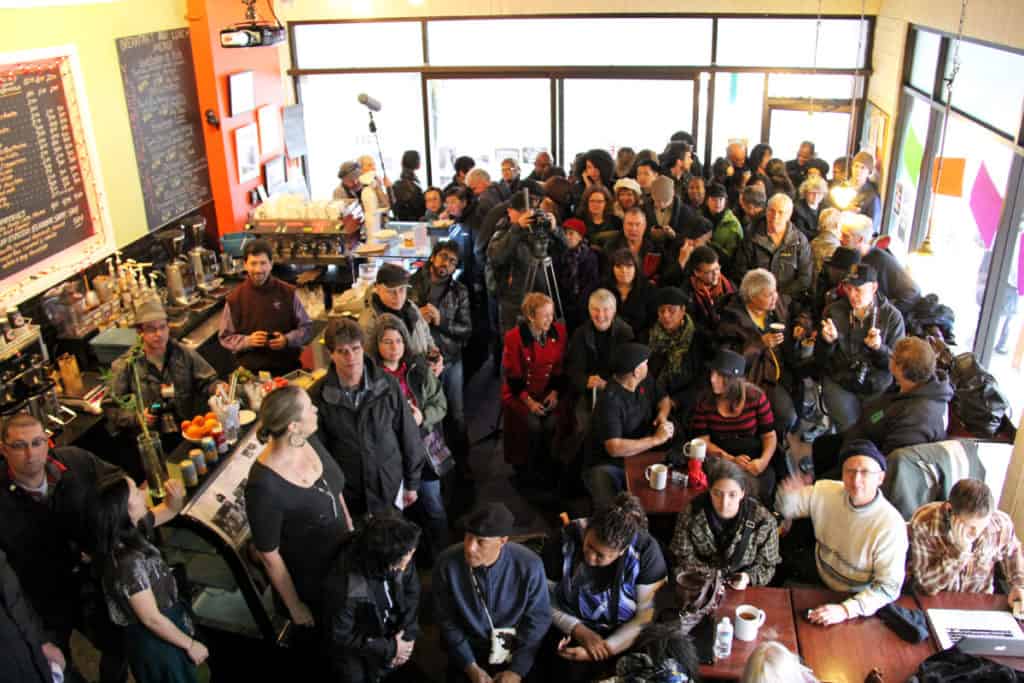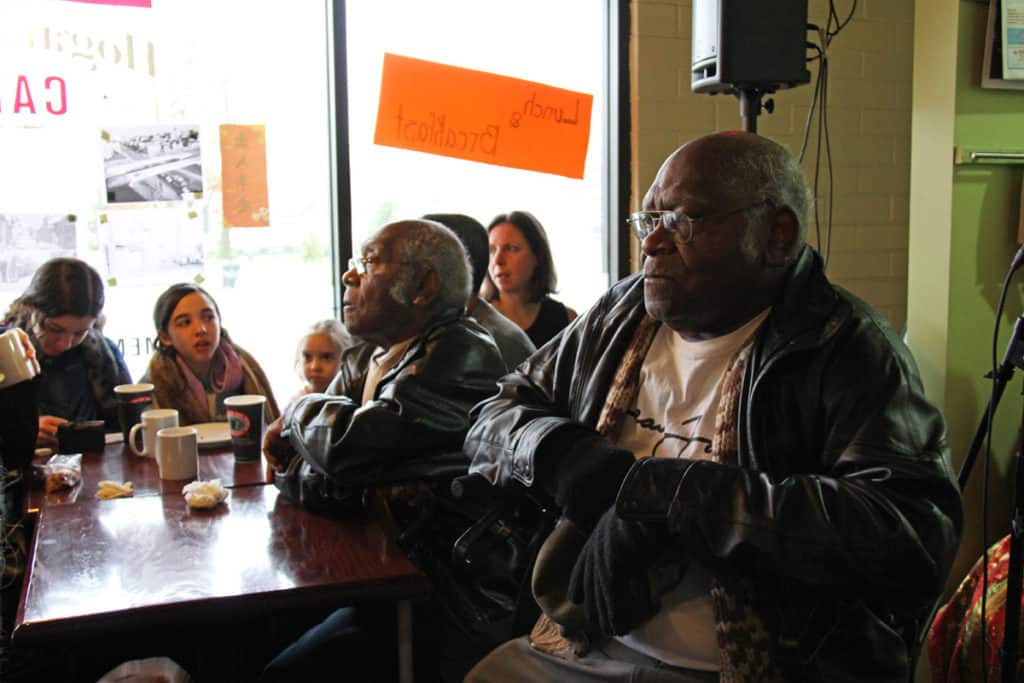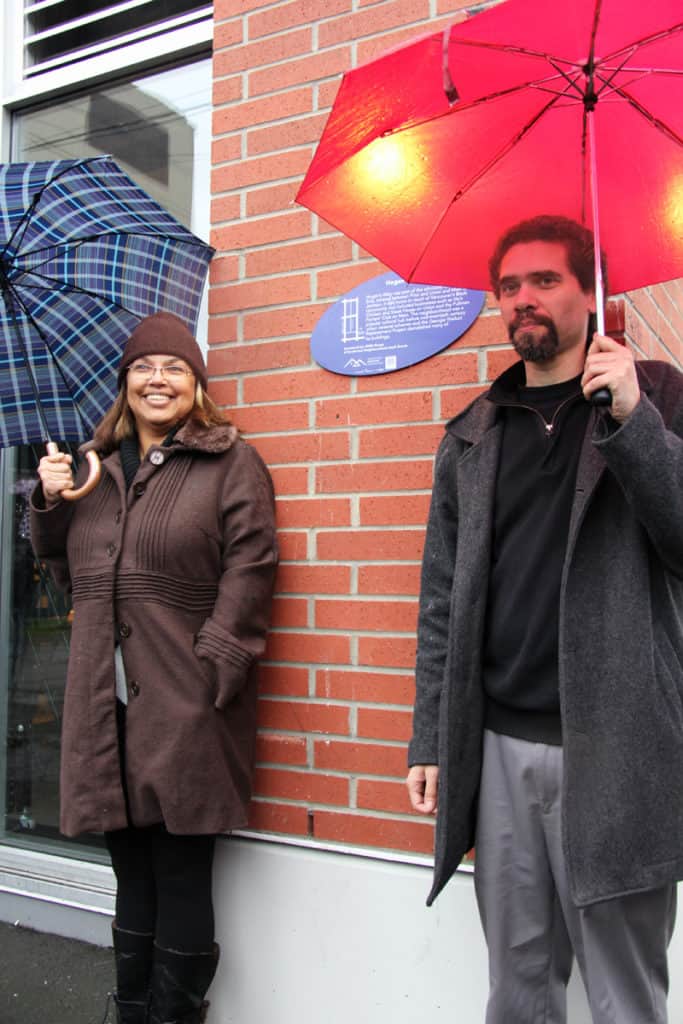Hogan’s Alley was the unofficial name for a T-shaped intersection at the southwestern edge of Strathcona that formed the nucleus of Vancouver’s first concentrated Black community. Vancouver’s first archivist, J.S. Matthews (see Major Matthews’ House), noted that the name “Hogan’s Alley” was in use by 1914.
The Beginnings
The first Black immigrants (of African Descent) arrived in British Columbia from California in 1858. They settled in Victoria and Salt Spring Island, but began migrating to Vancouver in the early 1900s, making their homes in Strathcona, an east side, working-class neighborhood that was the original home to Vancouver’s Italian community, as well as the southern edge of Chinatown. They were joined by Black homesteaders from Alberta, who originally came from Oklahoma, and by Black railroad porters worked at the Great Northern Railway nearby. Housing discrimination in other parts of Vancouver also concentrated the city’s Black population in this area.
Black cultural institutions the neighbourhood was known for included “chicken house” restaurants, which often doubled as speakeasies — best known was Vie’s Chicken and Steak — as well as the African Methodist Episcopal Fountain Chapel (1922-1950s) and the residential quarters of the Brotherhood of Sleeping Car Porters. At its height in the 1940s, the Black population in Strathcona numbered approximately 800.
Residents
The neighbourhood was home to Nora Hendrix, grandmother to rock legend Jimi Hendrix and a cook at Vie’s Chicken and Steak House. Nora Hendrix was involved in the community from the 1920s through to its demise, remaining nearby until the 1980s. Jimi Hendrix is known to have visited his grandmother during his childhood. Other performers from the community include the singer and actor Thelma Gibson-Towns and her brother Leonard Gibson, whose Negro Workshop Dance Group led to his work with Ballet British Columbia.
Urban Renewal
Over the years, the Black population endured efforts by the city to rezone Strathcona making it difficult to obtain mortgages or make home improvements, and by newspaper articles portraying Hogan’s Alley as a centre of squalor, immorality and crime. Beginning in 1967, the City of Vancouver began leveling the western half of Hogan’s Alley to construct an interurban freeway through Hogan’s Alley and Chinatown. The freeway was ultimately stopped, but construction of the first phase – the Georgia viaduct – was completed in 1971. In the process, the western end of Hogan’s Alley was expropriated and several blocks of houses were demolished. Since the demise of Hogan’s Alley, no identifiably Black neighbourhood has emerged in Vancouver, but organizations like the British Columbia Association for the Advancement of Coloured People and festivals such as Caribbean Days and Black History Month have brought community members together.
Legacies
In recent years, there have been significant efforts to commemorate the neighbourhood, through community and government initiatives such as a stamp issued by Canada Post in February 2014 as part of Black History Month. Artists such as Andrea Fatona and Cornelia Wyngaarden, Wayde Compton, and Stan Douglas, have explored Hogan’s Alley in their work. Hogan’s Alley Memorial Project and VHF worked towards the Places That Matter plaque. The Hogan’s Alley Society has partnered with the Portland Hotel Society (“PHS”), the city of Vancouver and BC Housing to deliver a 52-unit temporary modular housing development on the Hogan’s Alley Block, named Nora Hendrix Place, and is working on a MVRD Black Experience Project to begin mapping out the diverse experiences of people of African descent (Black) in Metro Vancouver.
With the confirmation of the Georgia Street viaducts removal, there are plans for a Black Cultural Centre on the former site of Hogan’s Alley. Under the approved North East False Creek Plan section 4.4 and 10.4, the City of Vancouver has indicated the intent to establish a Cultural Centre on the 898 Main Street block.
Video Resources and Projects
Related Organizations and Online Resources
Nearby Places That Matter



